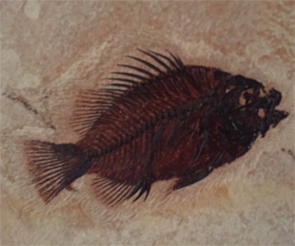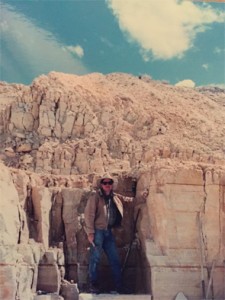
A 50 million-year-old Priscscara fossil fish from the Green River formation in Wyoming.
When Rodolfo “Rudy” Molina, MD, was 8 years old, a college recruiter visited his home. Unbeknownst to his parents, their son, now a rheumatologist at Arthritis Associates in San Antonio, Texas, had entered several of his drawings in a competition intended for high school students. The recruiter, unaware of the young artist’s age, was definitely impressed by his talent and had planned on recruiting him.
“He smiled and asked if I did these drawings,” recalls Dr. Molina, who reluctantly nodded, hiding behind his mother’s skirt. “He said maybe I could attend his college when I got a little older and gave me his business card, which I quickly lost.”
Also as a boy, Dr. Molina could often be found digging for fossils in various riverbeds surrounding his hometown of Corpus Christi, Texas.
Hobby vs. Career
For as long as he can remember, Dr. Molina has enjoyed two hobbies: drawing and collecting fossils. However, he chose to pursue a career in medicine instead of art or paleontology.
Dr. Molina attended Baylor College of Medicine in Houston, graduating in 1976 and completing his residency at Baylor in 1979. The recipient of a U.S. Air Force scholarship, he spent the next nine years in the military as chief of rheumatology at Malcolm Grow Medical Center in Washington, D.C. During his military service, he completed his fellowship at Johns Hopkins University in Baltimore in 1982 and spent six years as director of a combined rheumatology program between Malcolm Grow and Walter Reed National Military Medical Center in Bethesda, Md.

Dr. Molina on a dig in western Wyoming near the Green River Formation.
Digging for Bones
After moving to San Antonio in the early 1990s to work in private practice, Dr. Molina attended a rock show and became fascinated by some fossils of trilobites, which are marine life that lived more than 550 million years ago. He befriended the vendor selling them, and his passion for fossil hunting was quickly renewed.
For more than a decade, he spent many weekends traveling with a group of paleontologists on digs around the U.S. and Mexico and read many books on fossils that explained when, where and how ancient land and sea creatures lived.
“I’m not sure I really discovered anything, but [I] did collect some fascinating ammonites,” he says, explaining that these sea creatures lived inside a shell, like a big snail. “I found a lot of fish fossils that are fairly common, and also dinosaur bones and one T. Rex tooth, along with a toe.”



